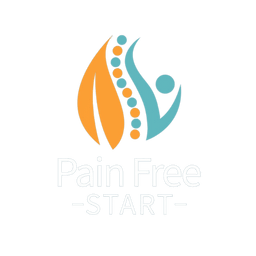Introduction
As a physiotherapist, I often advise patients on walking aids but even more regularly I am giving them advice on the best way to help their loved ones and those they are caring for. Caring for a loved one who uses a walking aid requires knowledge, patience, and attentiveness to ensure their safety and comfort. However, this can be a minefield with so much choice. Walking aids, such as sticks (canes), Zimmer frames and walkers all provide essential support for individuals with mobility challenges but which one and should I get wheels or not? – it can be confusing. This guide offers practical advice from an expert starting with which aid will suit, then how to adjust it, the best way to use it and much more. You are all trying so hard and doing a great job – I’m here to support you and help you to create a safe environment for your loved one.
Understanding Different Walking Aids
1. Sticks (Canes)
USE: Ideal for individuals needing minimal support. It helps with balance and reduces strain on one side of the body. For more support 2 can be a great option this also keeps your walking more equal.
Single-point sticks
For light support this is the type most of us think about.
Quad sticks
For added stability. See picture below.
Fischer sticks
Have moulded handles and are ideal for those with arthritic hands or wrists. See picture below.
Fold-up sticks
These are ideal for those who don’t routinely use a stick, but take comfort from knowing that they have one with them if they do need one.

2. Zimmer Frame
USE: Provides more support than sticks or canes. Suitable for those with significant balance or strength issues.
Zimmer frame
Standard Zimmer Frames have no wheels for maximum stability, but you have to lift and place these which can be tricky for some. Different sizes heights and bases some can be wide and difficult to move around small spaces.
Wheeled Zimmer frames
These have 2 wheels at the front and stoppers at the back these do not need to be lifted so can make for easier movement.
3. Walkers / Rollators
USE: Offers support and mobility, often featuring a seat for rest breaks. Ideal for those who need moderate assistance but can manage a bit more mobility. Some may be unable to manage the breaks in which case they can go too fast leading to safety issues. For those people, a wheeled Zimmer Frame might be a better option.
FEATURES: Usually come with brakes, storage compartments, and seats. There are lots of different variations on the same theme, choose one to suit your requirements.
How to Assist with Walking Aids
Proper Fit and Adjustment
- Height: Ensure the walking aid is adjusted to the correct height. The user’s elbows should be slightly bent when holding the handles. If they are too bent then it makes it harder to gain support from, too low and you start leaning forwards.
- Comfort: Check that grips are comfortable and secure to prevent hand strain. some handles especially on the sticks can differ, I have come across very hard ones which is fine unless used a lot then they may become uncomfortable.
Safe Walking Techniques
THIS CAN BE HARD TO COMPREHEND WHEN WRITTEN. I HAVE INSTRUCTIONAL VIDEOS TO HELP.
Click the link to the Pain Free Start Youtube Channel for guidance on correct adjustment and use of aids, as well as guidance on stairs.
- Sticks (Canes): Encourage your loved one to hold the cane on the opposite side of the affected leg. They should move the cane and affected leg together, followed by the healthy leg. If using 2 sticks then you can move them both together and then step into their bad leg first, or you can use them alternately moving opposite stick and leg at the same time.
- Zimmer Frame: Move the frame forward first either lifting or pushing depending on if it has wheels, then step into it. If they have a bad leg it will be easier to move that first. Always keep both hands on the frame so it doesn’t tip. Try and maintain an upright posture.
- Rollators / Walkers: Guide them to push the rollator or walkers forward and step into it. Stepping with the bad leg first is normally easiest. Ensure they use the brakes when sitting or standing.
Moving from Sitting to Standing
- Preparation: Ensure the walking aid is within easy reach. Do not pull up on the frame it will tip.
- Technique: Assist them by providing a stable surface to push off from (e.g., armrests). Encourage them to lean slightly forward and use their legs to stand. It is easier to stand from a higher chair you could add a cushion or you can get raisers to put on the chair. Chairs are much easier the sofas to get up from.
- Support: Stand by their side to provide additional support and guidance if needed.
Navigating Stairs
- With a Stick: When ascending, they should step up with the stronger leg first, followed by the stick and affected leg. When descending, the stick and affected leg go down first, followed by the stronger leg. It is always best to use a handrail. Most people find holding 1 handrail and with the other hand 1 stick – is ideal.
- With a Zimmer, Walker or Rolator: Do not use Zimmer frames, walkers or rolators on stairs. My experience is that often people can manage the stairs with handrails or a handrail and a stick but safety is always the first priority. Consider a stair lift or other assistance devices if needed. It will be useful to have 2 aids so there is 1 downstairs and 1 upstairs saving the need for someone to keep moving it up and down.
- Downstairs living: There is also the option of living downstairs especially if it is going to be a short-term problem and they have a toilet downstairs this is easy, or consider a commode if needed.

Creating a Safe Environment
1. Home Modifications
- Clear Pathways: Ensure hallways and rooms are free of obstacles and clutter. Remove rugs and mats that can be trip hazards.
- Slippy flooring: Use footwear or grippy socks to gain a better grip and prevent slips.
- Adequate Lighting: Ensure all areas are well-lit to avoid trips and falls, especially during the night.
- Pets: Consider how you will keep them at a safe distance when walking to prevent them from creating a fall risk.
2. Bathroom Safety
- Grab Bars: Install grab bars near the toilet and in the shower or bathtub. Think about the best position to put them will be at the toilet it is often easier to push down than pull up.
- Shower Chairs: Consider using a shower chair to provide stability and reduce the risk of falls.
- Non-Slip Mats: Use non-slip mats in the bathroom to prevent slips.
- Toilet adaptions: (See diagram below) Toilets can be too low for some people making getting up difficult. 2 options are a toilet seat raise that increases the seat height, these vary in height depending on your needs. Toilet frames make the seat higher, and also provide handles to push up from.

3. Regular Maintenance of Walking Aids
- Inspection: Regularly check the condition of the walking aid, including rubber tips (ferrules), wheels, and brakes. These are essential to maintain safety.
- Cleaning: Keep the walking aid clean to maintain its functionality and hygiene.
- Repairs: Address any wear and tear immediately. Replace parts as needed to ensure the walking aid remains safe and effective.
Providing Emotional Support
1. Encouragement and Patience
- Positive Reinforcement: Encourage your loved one by celebrating small victories and progress.
- Patience: Be patient and understanding, as using a walking aid can be challenging and may require time to adapt.
2. The Stigma of Using a Walking Aid
- Maintaining Independence: See it as a way of keeping moving and doing the things you love. This is such an important thing it’s very easy to lose our strength and confidence and very hard to get them back so use your aid to maintain this.
- Too Boring and Gray: Most walking aids are not very inspiring however I love this company Neowalk which provides beautiful sticks some even light up glowing at night. Created by a lady who found herself needing an aid in her 40s but could not find anything that made her feel confident take a look for yourself – stand out from the crowd.
3. Active Listening
- Concerns: Listen to any concerns they may have about using the walking aid. Address these concerns promptly to ensure they feel comfortable and secure.
- Feedback: Regularly ask for their feedback on how they feel using the aid and any adjustments needed.
Training and Professional Guidance
1. Professional Training
- Physiotherapy Sessions: Accompany your loved one to physiotherapy sessions to learn proper techniques and exercises that can assist with their mobility.
- Instructional Videos: I have a range of videos on the Pain Free Start Youtube Channel helping you to correctly fit and use aids, I think it’s always easier to visually see things like this. There is also one for stairs. Click here to look.
- Complex needs: discuss with your doctor or GP and ask about a referral to a specialist team that can give individual support and guidance.
2. Address the Underlying Cause:
- Improve Pain and Injury: If you are requiring an aid because you are struggling with pain or injury look to directly address this. I have online programs to help with arthritic knees, foot pain, and back pain as well as a full body program to optimise your body building strength, flexibility and balance. Take a look I would love to help improve your situation and mobility.
- One-to-one support: Chat with your Doctor to see how they can help painkillers may improve your ability to walk, or book in with a physiotherapist to get one-to-one support.
3. Regular Check-Ins
- Follow-Up Appointments: Ensure they attend all follow-up appointments with healthcare providers to monitor progress and make necessary adjustments.
- Home Visits: Consider arranging for a physiotherapist, OT or care team to visit your home and provide personalised guidance.
Conclusion
Assisting a loved one with a walking aid requires a combination of practical skills, safety awareness, and emotional support. By understanding which aid is best, how to properly use and maintain walking aids, creating a safe environment, and providing encouragement, caregivers can significantly enhance the mobility and quality of life for their loved ones. Always seek professional advice and training to ensure you’re providing the best care possible, and remember that your support plays a crucial role in their recovery and independence.
P.S. I am here to support you if you need me. To learn more about how I can help, click here.
Take care, Helen
Helen Manders BSc (Hons) MCSP HCPC
Chartered Physiotherapist Since 2001



